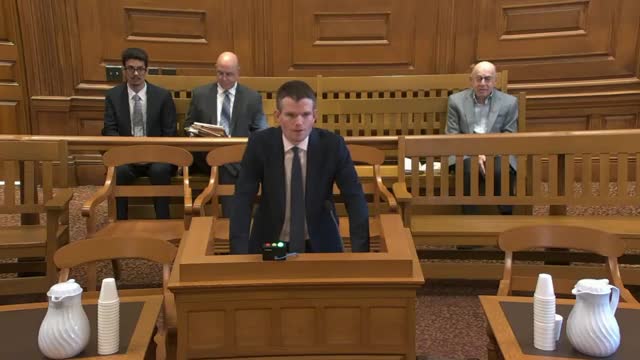Court debates reasonable suspicion in controversial police stop
October 04, 2024 | Judicial - Appeals Court Oral Arguments, Judicial, Massachusetts
This article was created by AI summarizing key points discussed. AI makes mistakes, so for full details and context, please refer to the video of the full meeting. Please report any errors so we can fix them. Report an error »

In a recent court hearing, the validity of a police stop based on reasonable suspicion was scrutinized, focusing on whether officers had sufficient grounds to believe the defendant was carrying an unlicensed firearm. The defense argued that the police lacked reasonable suspicion at the time of the stop, emphasizing that the evidence presented did not support the claim that the defendant was engaged in criminal activity.
The Commonwealth contended that three factors indicated the defendant was unlicensed: his evasiveness, the way he held his side, and his denial of possessing a firearm. However, the defense countered that these observations occurred after the defendant had already been stopped, rendering them irrelevant to the reasonable suspicion analysis. The defense highlighted that the officer's testimony lacked specifics regarding the defendant's alleged evasiveness, and that holding his side was not indicative of criminal behavior, as it was attributed to a prior injury.
The discussion also touched on the implications of the defendant's denial of firearm possession. The defense argued that such a denial, without corroborating evidence, could not logically lead to reasonable suspicion of unlicensed possession. The court examined whether the description provided by a 911 caller—a man in a camouflage top with a fresh haircut—was sufficient to justify the stop. The defense maintained that while the description might suggest the defendant was in possession of a firearm, it did not rise to the level of reasonable suspicion necessary for a stop.
The Commonwealth's position hinged on the assertion that the defendant's matching description and subsequent behavior constituted reasonable suspicion. They argued that the officer acted appropriately based on the information available at the time, including the report of someone brandishing a firearm. However, the defense pointed out ambiguities in the officer's testimony and questioned the clarity of the circumstances leading to the stop.
As the hearing concluded, the court was left to determine whether the police had acted within constitutional bounds when they stopped the defendant, weighing the nuances of reasonable suspicion against the backdrop of the evidence presented. The outcome of this case could have significant implications for the standards of police conduct and the interpretation of reasonable suspicion in future encounters.
The Commonwealth contended that three factors indicated the defendant was unlicensed: his evasiveness, the way he held his side, and his denial of possessing a firearm. However, the defense countered that these observations occurred after the defendant had already been stopped, rendering them irrelevant to the reasonable suspicion analysis. The defense highlighted that the officer's testimony lacked specifics regarding the defendant's alleged evasiveness, and that holding his side was not indicative of criminal behavior, as it was attributed to a prior injury.
The discussion also touched on the implications of the defendant's denial of firearm possession. The defense argued that such a denial, without corroborating evidence, could not logically lead to reasonable suspicion of unlicensed possession. The court examined whether the description provided by a 911 caller—a man in a camouflage top with a fresh haircut—was sufficient to justify the stop. The defense maintained that while the description might suggest the defendant was in possession of a firearm, it did not rise to the level of reasonable suspicion necessary for a stop.
The Commonwealth's position hinged on the assertion that the defendant's matching description and subsequent behavior constituted reasonable suspicion. They argued that the officer acted appropriately based on the information available at the time, including the report of someone brandishing a firearm. However, the defense pointed out ambiguities in the officer's testimony and questioned the clarity of the circumstances leading to the stop.
As the hearing concluded, the court was left to determine whether the police had acted within constitutional bounds when they stopped the defendant, weighing the nuances of reasonable suspicion against the backdrop of the evidence presented. The outcome of this case could have significant implications for the standards of police conduct and the interpretation of reasonable suspicion in future encounters.
View full meeting
This article is based on a recent meeting—watch the full video and explore the complete transcript for deeper insights into the discussion.
View full meeting
